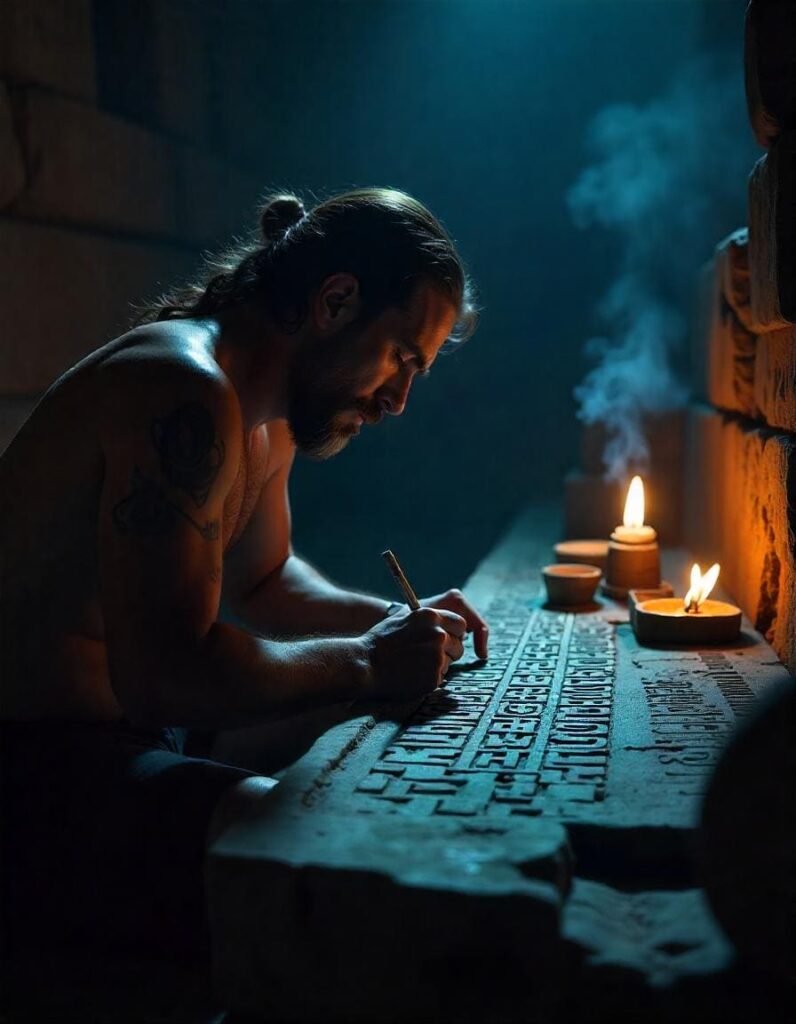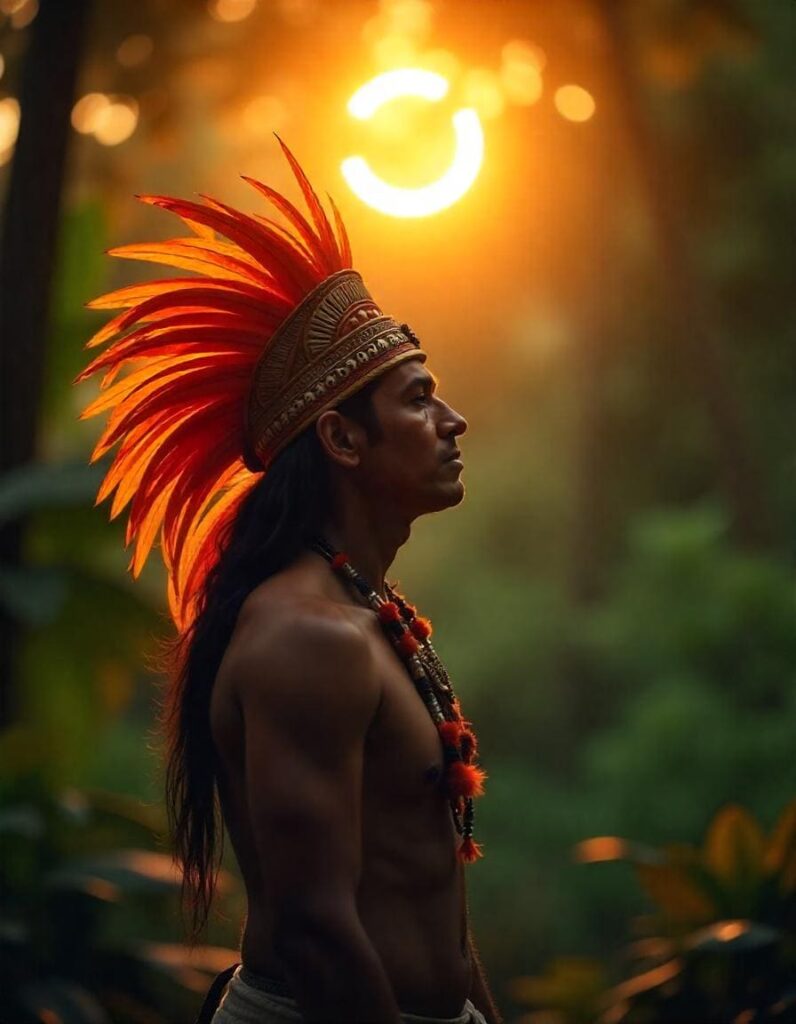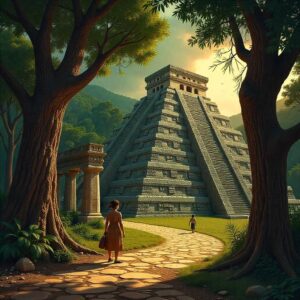The ancient Maya, one of the most sophisticated and enigmatic civilizations in history, ruled over the dense jungles of Mesoamerica for centuries. Known for their towering pyramids, intricate calendar systems, and profound understanding of astronomy, the Maya built a flourishing empire that spanned modern-day Mexico, Guatemala, Belize, Honduras, and El Salvador. Yet, despite their advancements, much of their history remains shrouded in mystery. Why did their great cities, like Tikal and Palenque, suddenly collapse? What secrets lie hidden in their cryptic hieroglyphs? And how did a civilization without modern technology achieve such astonishing precision in mathematics and astronomy?
From blood-stained sacrificial altars to prophecies of cosmic cycles, the Maya left behind a legacy steeped in legend and unanswered questions. Their myths speak of feathered serpents descending from the heavens, while their ruins whisper tales of vanished kings and forgotten rituals. Even today, archaeologists uncover startling new discoveries—hidden temples buried beneath jungle canopies, eerie acoustic phenomena in ancient ball courts, and evidence of advanced engineering that defies explanation. In this exploration of Mysteries and Legends: The Mayan Civilization, we’ll journey through their rise and fall, decode their myths, and delve into the unsolved enigmas that continue to baffle historians. Are you ready to uncover the secrets of the Maya?
The Rise and Fall of the Mayan Empire
The Golden Age of the Maya
The Maya civilization reached its peak during the Classic Period (250–900 CE), a time of unparalleled architectural, artistic, and intellectual achievement. Great city-states like Tikal, Palenque, and Chichen Itza flourished, each ruled by powerful kings who claimed divine authority.
- Tikal, hidden deep in the Guatemalan rainforest, was one of the most dominant Mayan cities, with towering temples like Temple IV (one of the tallest pre-Columbian structures in the Americas).
- Palenque, famed for its intricate carvings and the Temple of the Inscriptions (the tomb of King Pakal, whose sarcophagus lid sparked alien conspiracy theories).
- Chichen Itza, a later powerhouse in the Yucatán, where the Kukulkan Pyramid aligns with the equinoxes, casting a serpent-shaped shadow.
The Maya were master engineers and farmers, developing terraced fields, irrigation systems, and the “Three Sisters” (corn, beans, squash) agriculture. Their vast trade networks stretched from the highlands of Guatemala to the coasts of the Caribbean, exchanging jade, obsidian, cacao, and quetzal feathers.
The Mysterious Collapse
By the 9th century CE, the Maya heartland experienced a dramatic decline. Cities were abandoned, monuments went unfinished, and the once-great civilization fractured. Scholars still debate the causes:
- Environmental Stress: Severe droughts (confirmed by lake sediment studies) crippled crops.
- Warfare: Increased conflicts between rival city-states (evidence: burned palaces, mass graves).
- Overpopulation & Resource Depletion: Deforestation and soil exhaustion may have made cities unsustainable.
Yet, the collapse wasn’t total—northern cities like Chichen Itza and Mayapán thrived for centuries longer, and Maya culture persisted in smaller communities. Why some cities fell while others endured remains one of history’s great enigmas.
Mayan Mythology and Gods
The Pantheon of Mayan Deities
The Maya worshipped a complex pantheon of gods, each governing aspects of nature, war, and cosmic order. Among the most revered:
- Kukulkan (Quetzalcoatl to the Aztecs): The feathered serpent god of wind and wisdom, linked to the iconic pyramid at Chichen Itza.
- Chaac: The hook-nosed rain god, vital for agriculture, often depicted wielding a lightning axe.
- Itzamná: The creator god, patron of writing and science, who supposedly gave the Maya their calendar.
Their creation myth, the Popol Vuh, tells of gods molding humans from maize after failed attempts with mud and wood. It also features the Hero Twins, who outwit the lords of the underworld in a ballgame—a story mirrored in the Maya’s deadly pok-ta-pok ritual sport.
Rituals and Human Sacrifice
- Bloodletting Ceremonies: Kings and nobles pierced their tongues or genitals to offer blood, believing it nourished the gods.
- The Sacred Cenote at Chichen Itza: A sinkhole where gold, jade, and human remains (likely sacrificial victims) were found, confirming Spanish accounts of drownings to appease Chaac.
These rituals weren’t mere brutality—they were sacred contracts to maintain cosmic balance, ensuring the sun rose and rains came. Yet, they also hint at the desperation that may have fueled the civilization’s downfall.

The Mayan Calendar and Astronomical Genius
The Long Count Calendar
The Maya developed one of the most sophisticated calendar systems in history, tracking time with astonishing precision. Their Long Count Calendar measured vast cycles of 5,125 years, culminating in the infamous December 21, 2012, “doomsday” prediction. Contrary to popular myths, this date simply marked the end of a b’ak’tun (a 394-year cycle), not the apocalypse—modern Maya scholars confirmed it was never about the world ending, but rather a transition into a new era.
The Maya viewed time as cyclical, not linear, with each period carrying spiritual significance. Their calendars interlocked like gears:
- Haab’ (365-day solar calendar for agriculture)
- Tzolk’in (260-day sacred calendar for rituals)
- Calendar Round (52-year cycle when Haab’ and Tzolk’in aligned)
This system allowed them to predict eclipses, solstices, and even planetary movements centuries in advance.
Stargazers of the Ancient World
The Maya built observatories like El Caracol at Chichen Itza, a spiral tower with windows aligned to Venus’s extremes. Venus, associated with war god Kukulkan, dictated the timing of battles and sacrifices.
- Solar Alignments: During equinoxes, the Kukulkan Pyramid casts a serpent-shaped shadow, symbolizing the god’s descent.
- Lunar & Eclipse Records: The Dresden Codex contains tables predicting lunar eclipses with 99% accuracy.
Their astronomy wasn’t just scientific—it was sacred, linking celestial events to divine will.
Unsolved Mayan Mysteries
The Lost City of the Monkey God
In 2015, explorers in Honduras’s La Mosquitia jungle uncovered ruins of a mythical city, possibly “La Ciudad Blanca” (The White City). Lidar technology revealed plazas, pyramids, and artifacts untouched for centuries. Was this a refuge for Maya fleeing collapse—or a completely unknown culture?
The Mayan Hieroglyphic Code
For decades, their script was a mystery. Breakthroughs in the 1970s–90s (led by scholars like Linda Schele) cracked the code, revealing:
- Historical records of kings’ reigns (e.g., Palenque’s Pakal the Great).
- Poetry and prophecies in stelae and codices.
Yet, 15–20% of glyphs remain undeciphered, including clues to their collapse.
Advanced Technology or Lost Knowledge?
- Acoustics of Kukulkan Pyramid: A clap echoes as a quetzal bird’s cry—engineered or coincidence?
- Sacbeob (White Roads): Hundreds of miles of raised, plastered causeways linked cities. How did they maintain them without wheels or beasts of burden?

The Mayan Legacy in Modern Time
Descendants of the Maya Today
Over 6 million Maya live across Mexico and Central America, preserving their languages (Yucatec, K’iche’), weaving, and milpa farming.
- Zapatista Movement (1994): Indigenous Maya in Chiapas rebelled for land rights, using Ajaw (ancient king) imagery.
- Day of the Dead & Chaac Ceremonies: Traditional rain rituals still honor pre-Hispanic gods.
Mayan Influence in Pop Culture
- Films: Apocalypto (2006), Road to El Dorado (2000).
- Games: Tomb Raider’s Lara Croft explores Tikal; Civilization features Pacal as a leader.
- Tourism: Millions visit Tulum, Chichen Itza, and Uxmal, though debates rage over preserving sites vs. accessibility.
The Maya remind us that their “collapse” wasn’t an end—their culture thrives, adapts, and still whispers secrets to those who listen.
Conclusion
The Maya civilization may have faded from its golden-age splendor, but its legacy is far from lost. From the towering pyramids of Chichen Itza to the intricate glyphs still being decoded, the Maya left behind a puzzle that continues to captivate archaeologists, historians, and travelers alike. Their genius in astronomy, their reverence for the cycles of time, and their dramatic collapse all serve as reminders of humanity’s fragility—and resilience. Today, the Maya are not just relics of the past; their descendants keep traditions alive, blending ancient rituals with modern life. Meanwhile, new technologies like LiDAR and AI-assisted translation promise to unlock even more of their secrets, ensuring that the mysteries of this extraordinary civilization remain at the forefront of discovery. Whether through the echoes of a clap at Kukulkan’s pyramid, the whispers of the jungle hiding lost cities, or the vibrant culture of modern Maya communities, their story is still being written. As we uncover more, one truth becomes clear: the Maya were not just masters of their time—they speak across centuries, challenging us to learn from their wisdom, their innovations, and even their downfall. The greatest lesson they left behind? That no civilization truly disappears—it simply transforms, waiting for the next generation to listen.

